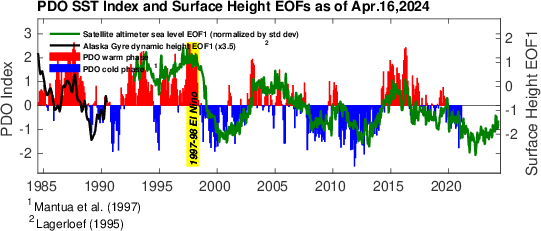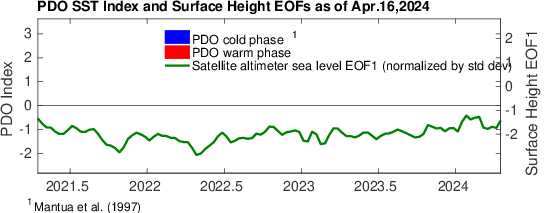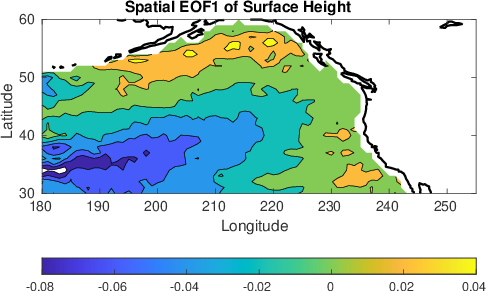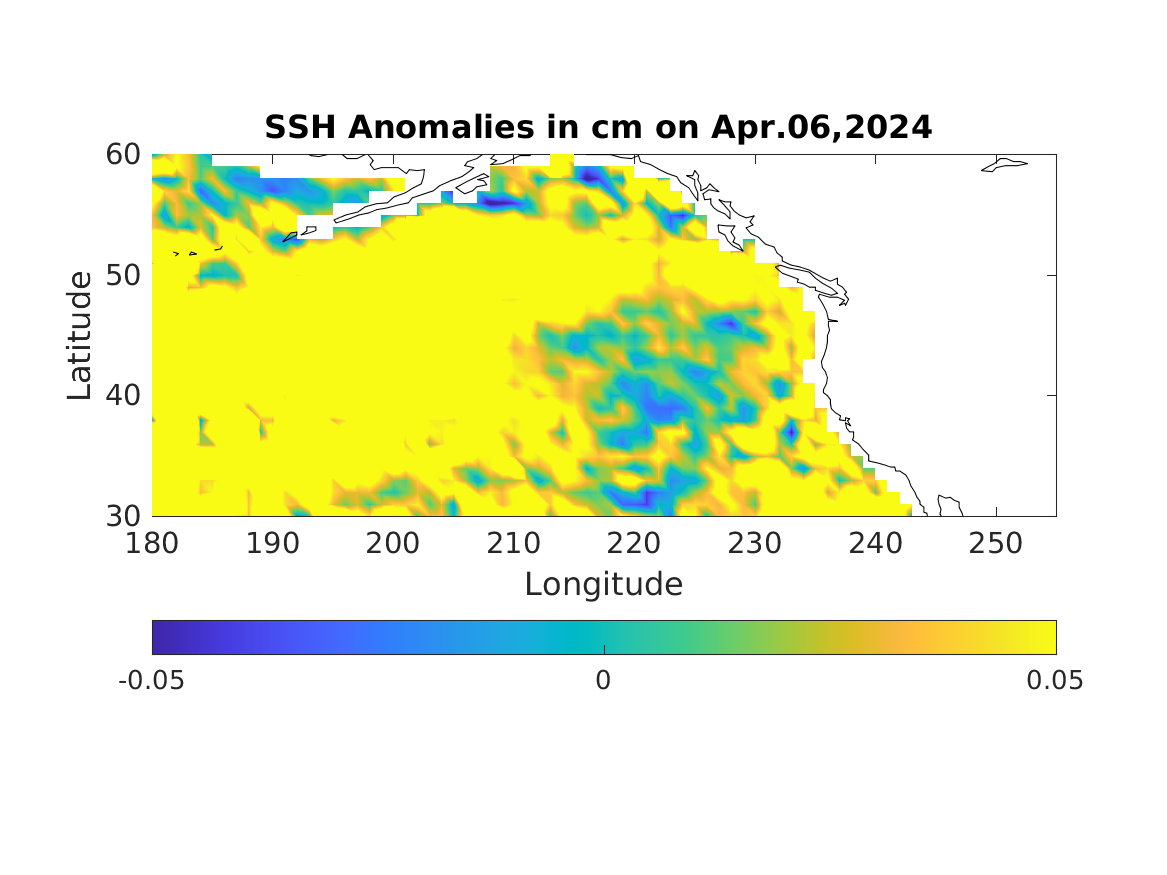Intro
A study of the long period baroclinic variability in the Northeast Pacific Ocean (Cummings and Lagerloef, 2004) concluded that this variability occurs as a response to stochastic atmospheric forcing. They report that a significant percentage (~40%) of this variability is evident in the first EOF mode (EOF1) of a Markov model driven by local Ekman pumping as well as the EOF1 mode of the Topex/Poseiden/Jason Altimeter representing the SSH. This indicates that the EOF1 of the altimeter data is a useful indicator of the decadal variability in the northeast Pacific. Because SSH variability represents the vertically integrated buoyancy changes of the upper ocean and pycnocline, it provides more slowly varying and robust signal than SST, which responds more rapidly to atmospheric forcing. This is consistent with previous studies of dynamic height anomalies over the Gulf of Alaska (Lagerloef, 1995), spectra of sea surface temperature and salinity (Hall and Manabe, 1997), and a long time series of pycnocline depth anomalies at Station P (Cummings and Lagerloef, 2002).
PDO index
As a method of monitoring this variability, we present the EOF1 amplitude and spatial pattern of the altimeter SSH anomaly (from the long-term mean seasonal cycle). Other North Pacific variability indices are shown for comparison:
(1) The PDO SST index (Mantua, 1997, is portrayed as blue and red bars, and (2) the historic (1968-1990) Alaska Gyre dynamic height anomaly EOF1 (Lagerloef, 1995), scaled with a factor of 3.5, is the black line. The normalized altimeter SSH anomaly EOF1 amplitude is included as the green line. The most recent SSH anomalies from the 1993:2007 climatology are also shown.




